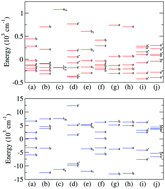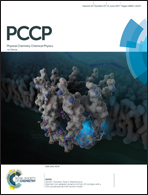Predicting photon cascade emission in Pr3+ doped fluorides
Abstract
We present a theoretical approach, based on a density functional theoretic parametrization of a model Hamiltonian, that allows for the determination of the complete electronic 4fn and 4fn−15d valence manifolds of a lanthanide ion impurity in different host lattices in an easy, fast and reliable way. The model accounts for the electrostatic interactions, ligand field splitting due to the surroundings of the impurity and spin–orbit coupling effects, which means that the parametrization is transferable to different ligand environments. The model is applied to several Pr3+ doped fluorides, which are of great interest for designing warm white lighting devices. We show that the model correctly predicts which of them presents photon-cascade emission as experimentally observed. We also determine the absorption (emission) spectra from the dipolar transition probabilities from the lowest 4f2 (4f5d) state to the states of the 4f5d (4f2) manifold of the Pr3+ impurity, in agreement with the available experimental data. The present approach can be applied to other impurity-doped systems where the accurate determination of the valence impurity states is crucial for characterizing the relevant properties of the system.



 Please wait while we load your content...
Please wait while we load your content...